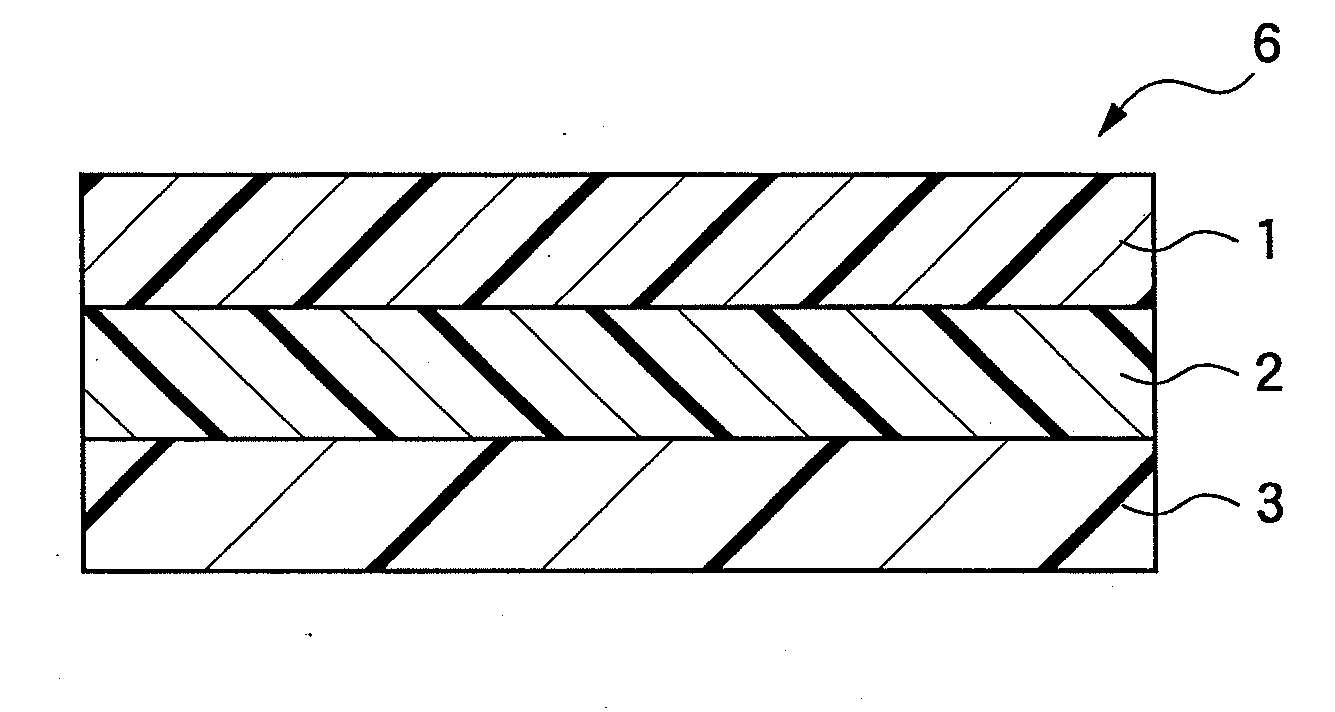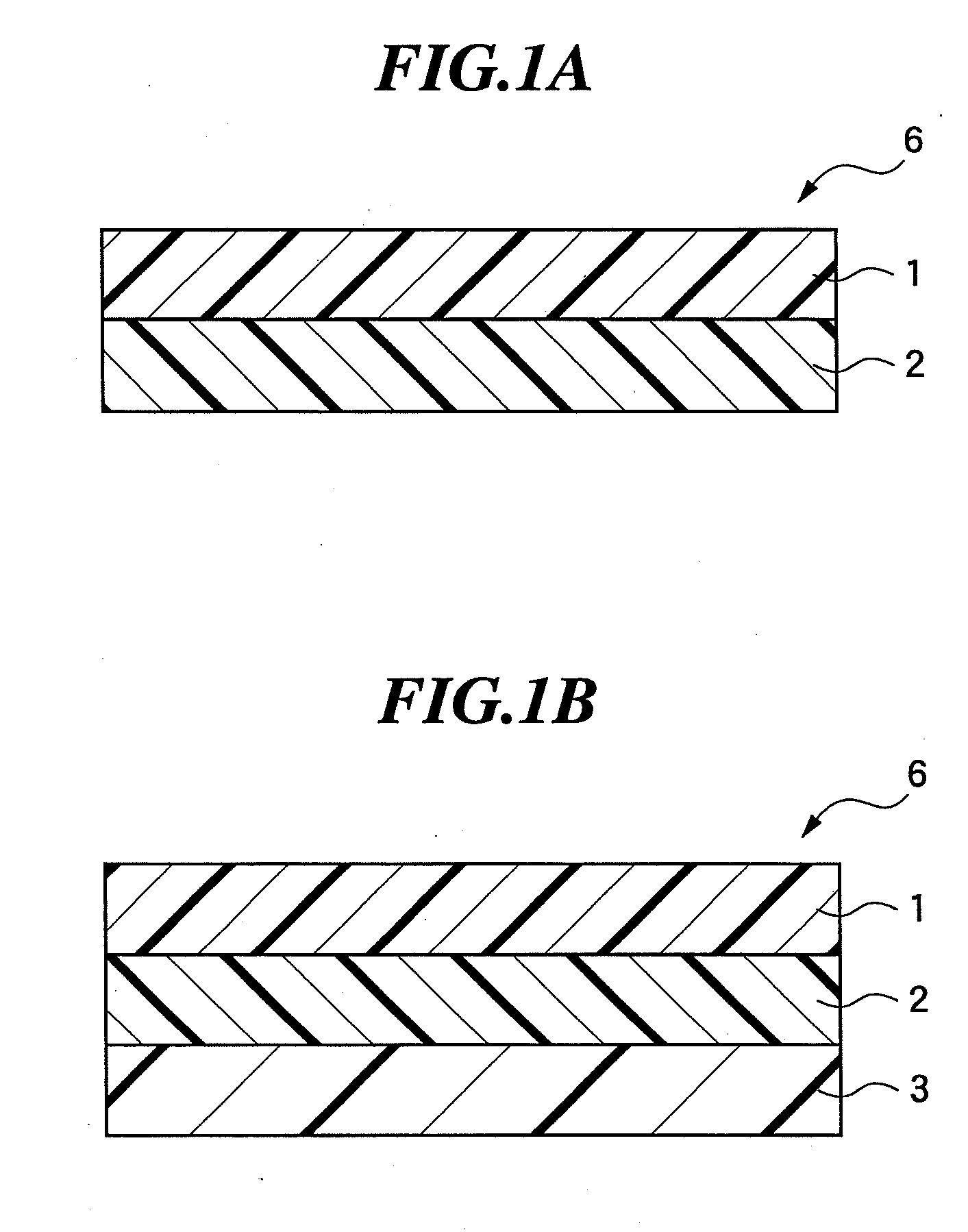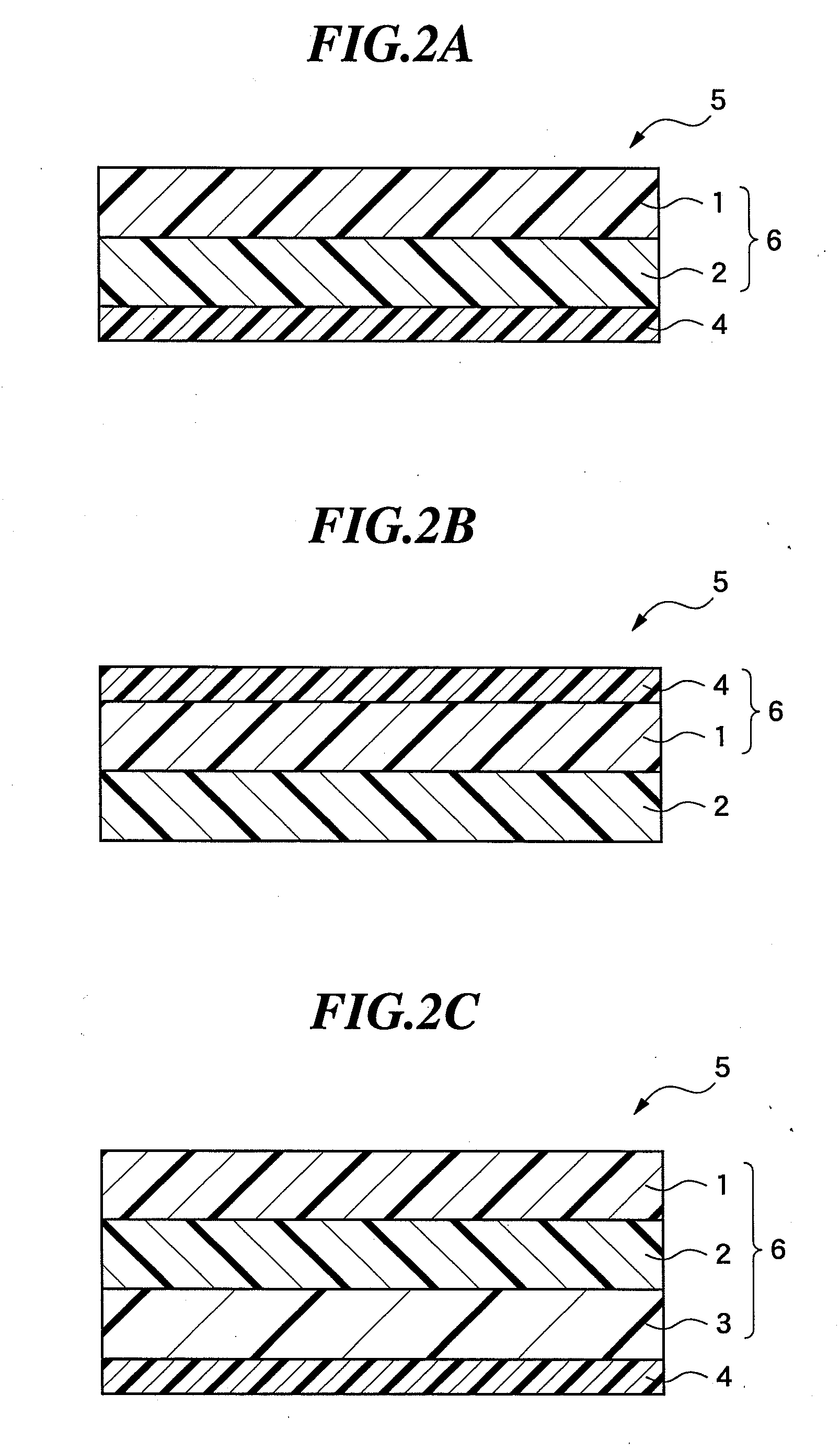Pressure-sensitive adhesive sheet, method for producing the same and method for using the same as well as a multi-layer sheet for use in the pressure-sensitive adhesive sheet and method for producing the same
a technology of pressure-sensitive adhesives and adhesive sheets, which is applied in the direction of film/foil adhesives, synthetic resin layered products, transportation and packaging, etc., can solve the problems of thin and brittle wafers, peeling of sheets, and prone to breakage of semiconductor wafers, so as to reduce the curl of wafers and reduce the sag of semiconductor wafers
- Summary
- Abstract
- Description
- Claims
- Application Information
AI Technical Summary
Benefits of technology
Problems solved by technology
Method used
Image
Examples
examples
[0125]Hereinafter, the present invention will be described in more detail by way of examples. However, the present invention should not be considered to be limited thereto. It should be noted that in the following examples, all parts are by weight unless otherwise indicated specifically.
example i
Example I-1
[0126]In a reactor equipped with a condenser, a thermometer, and a stirrer were charged 50.0 parts of t-butyl acrylate, 30.0 parts of acrylic acid, and 20.0 parts of butyl acrylate as an acrylic-based monomer, 1.0 part of trimethylolpropane triacrylate as a polyfunctional monomer, 0.1 part of 1-[4-(2-hydroxyethoxy)phenyl]-2-hydroxy-2-methyl-1-propan-1-one (trade name: “Irgacure 2959”, manufactured by Ciba Specialty Chemicals Co., Ltd.) as a photopolymerization initiator, 73.4 parts of polyoxytetramethylene glycol (molecular weight: 650; manufactured by Mitsubishi Chemical Corporation) as a polyol, and 0.05 part of dibutyltin dilaurate as a urethane reaction catalyst. While stirring, 26.6 parts of xylylene diisocyanate was dripped to the mixture and the mixture was allowed to react at 65° C. for 2 hours to obtain a urethane polymer-acrylic-based monomer mixture. It should be noted that the polyisocyanate component / polyol component ratio (NCO / OH equivalent ratio) was 1.25.
[...
example i-2
[0128]In a reactor equipped with a condenser, a thermometer, and a stirrer were charged 117 parts of N,N-dimethylacrylamide and 117.0 parts of acrylic acid as an acrylic-based monomer, 0.1 part of 1-[4-(2-hydroxyethoxy)phenyl]-2-hydroxy-2-methyl-1-propan-1-one (trade name: “Irgacure 2959”, manufactured by Ciba Specialty Chemicals Co., Ltd.) as a photopolymerization initiator, 73.4 parts of polyoxytetramethylene glycol (molecular weight: 650; manufactured by Mitsubishi Chemical Corporation) as a polyol, and 0.05 part of dibutyltin dilaurate as a urethane reaction catalyst. While stirring, 26.6 parts of xylylene diisocyanate was dripped to the mixture and the mixture was allowed to react at 65° C. for 2 hours to obtain a urethane polymer-acrylic-based monomer mixture. It should be noted that the polyisocyanate component / polyol component ratio (NCO / OH equivalent ratio) was 1.25.
[0129]The urethane polymer-acrylic-based monomer mixture was coated on a 100-μm thick ethylene / vinyl acetate ...
PUM
| Property | Measurement | Unit |
|---|---|---|
| width | aaaaa | aaaaa |
| width | aaaaa | aaaaa |
| radius | aaaaa | aaaaa |
Abstract
Description
Claims
Application Information
 Login to View More
Login to View More - R&D
- Intellectual Property
- Life Sciences
- Materials
- Tech Scout
- Unparalleled Data Quality
- Higher Quality Content
- 60% Fewer Hallucinations
Browse by: Latest US Patents, China's latest patents, Technical Efficacy Thesaurus, Application Domain, Technology Topic, Popular Technical Reports.
© 2025 PatSnap. All rights reserved.Legal|Privacy policy|Modern Slavery Act Transparency Statement|Sitemap|About US| Contact US: help@patsnap.com



